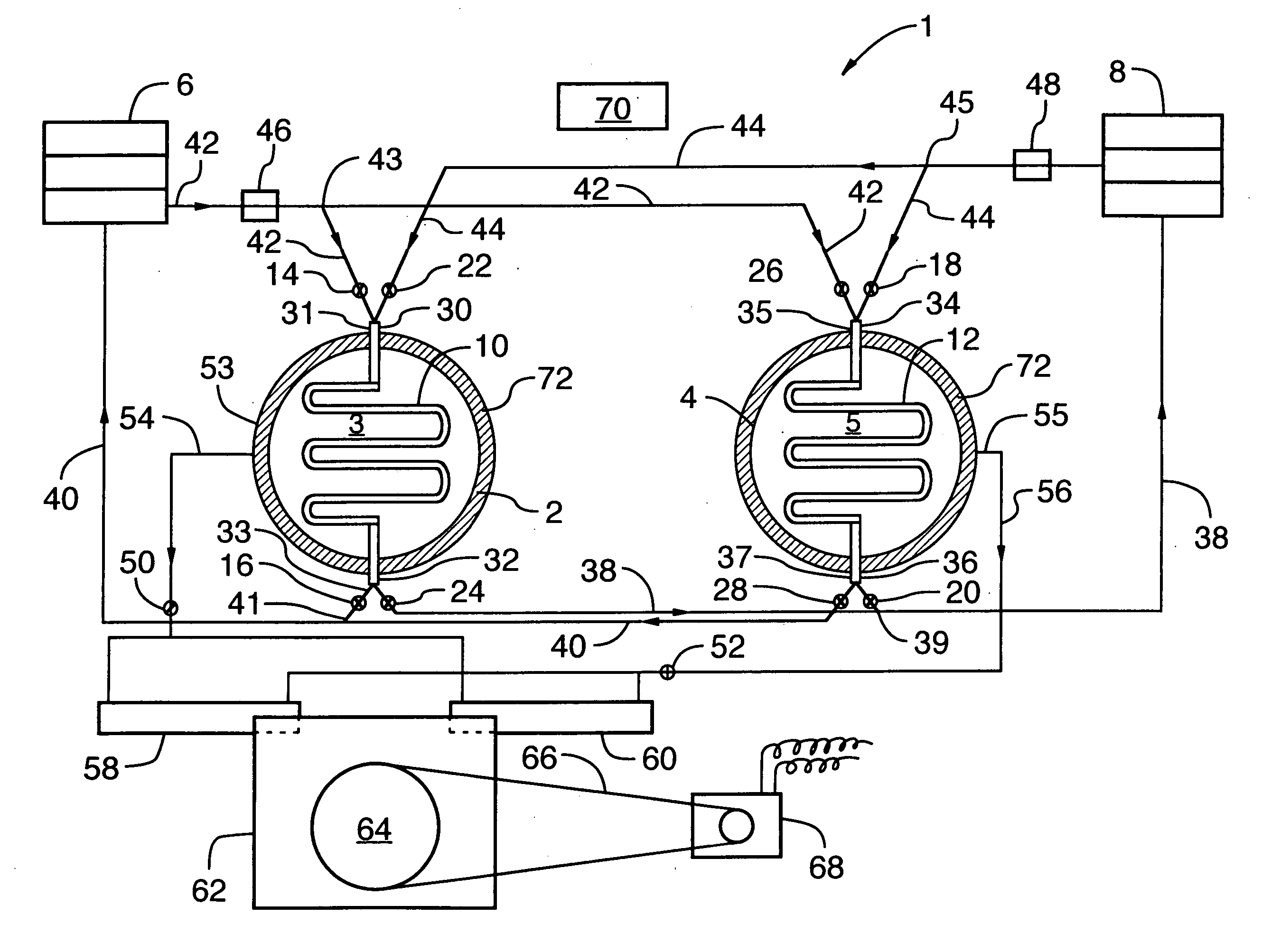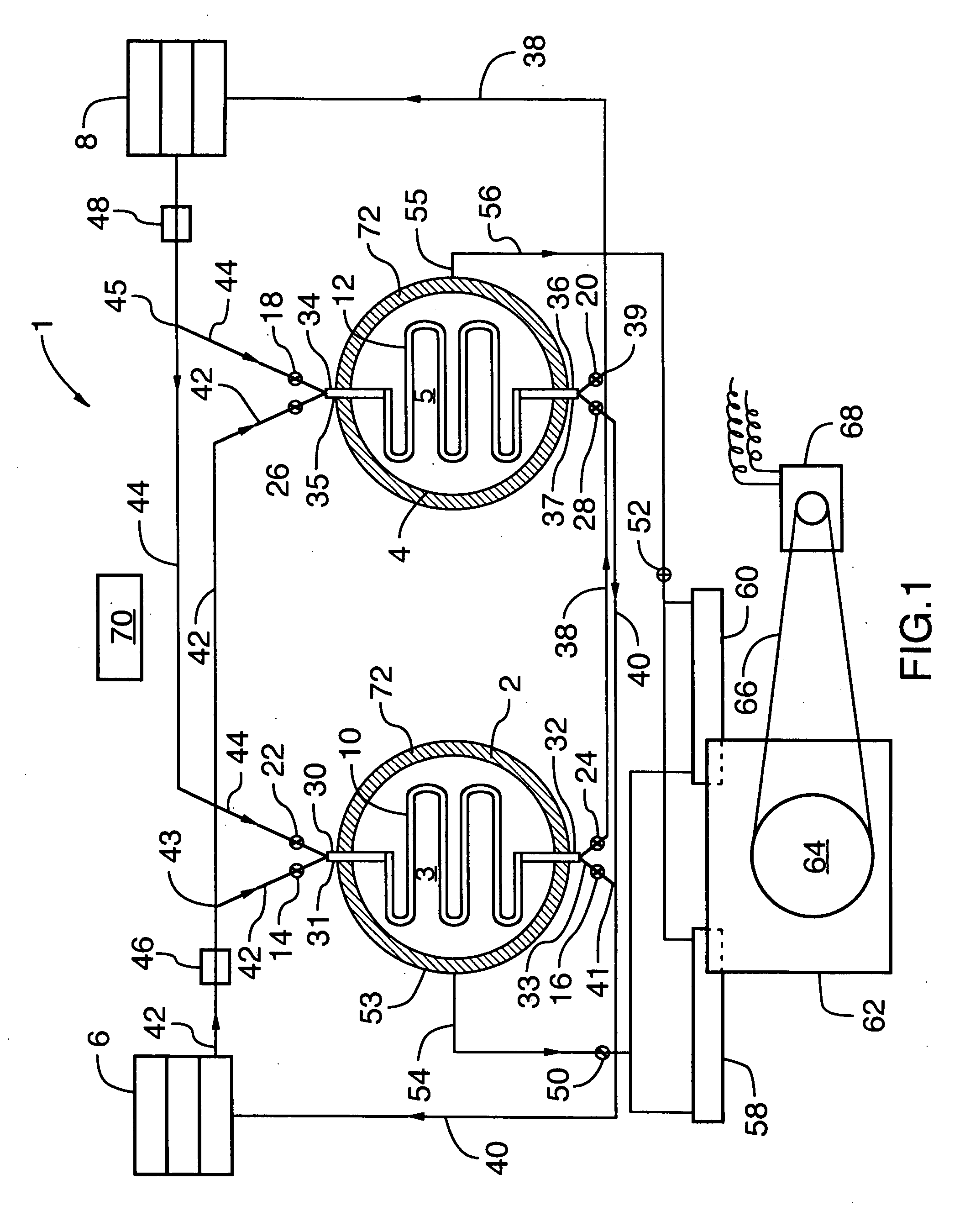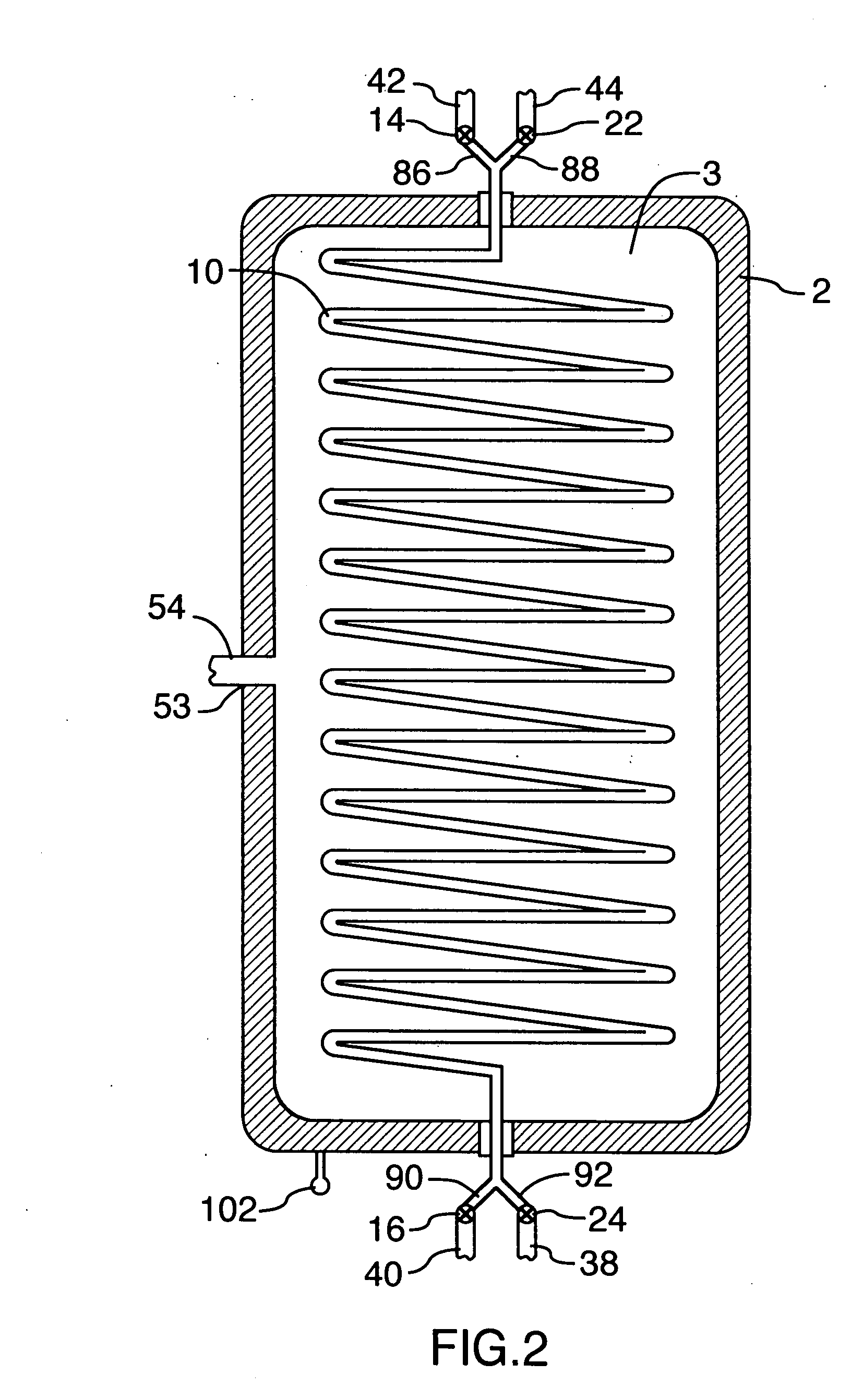Thermal conversion device and process
a conversion device and heat exchange technology, applied in steam engine plants, engines without rotary main shafts, catalytic cracking, etc., can solve the problems of weak sunlight energy source, difficult to effectively use sunlight for home energy needs, and difficult to harness sunlight efficiently for conversion into useful forms of energy
- Summary
- Abstract
- Description
- Claims
- Application Information
AI Technical Summary
Benefits of technology
Problems solved by technology
Method used
Image
Examples
Embodiment Construction
[0033] The present invention provides an apparatus for converting a differential in thermal energy between two thermal sources into mechanical energy that can be used for a wide range of applications known to a person skilled in the art including the generation and storage of electrical energy. The invention also relates to a method of converting a differential in thermal energy between two thermal sources into mechanical energy. The method can be carried out with the apparatus of the present invention.
[0034] A preferred embodiment of the present is shown in FIG. 1. Apparatus 1 includes a first vessel 2 and a second vessel 4. Each of the two vessels is preferably a sealed container that defines a chamber therein for containing a gas under pressure. As shown in FIGS. 2 and 3, the first vessel 2 defines a chamber 3 and the second vessel 4 defines a chamber 5. The vessels contain the gas under pressure in the chambers. The vessels are shown in lateral cross section in FIG. 1 and in lo...
PUM
| Property | Measurement | Unit |
|---|---|---|
| diameter | aaaaa | aaaaa |
| diameter | aaaaa | aaaaa |
| thermal energy | aaaaa | aaaaa |
Abstract
Description
Claims
Application Information
 Login to View More
Login to View More - R&D
- Intellectual Property
- Life Sciences
- Materials
- Tech Scout
- Unparalleled Data Quality
- Higher Quality Content
- 60% Fewer Hallucinations
Browse by: Latest US Patents, China's latest patents, Technical Efficacy Thesaurus, Application Domain, Technology Topic, Popular Technical Reports.
© 2025 PatSnap. All rights reserved.Legal|Privacy policy|Modern Slavery Act Transparency Statement|Sitemap|About US| Contact US: help@patsnap.com



